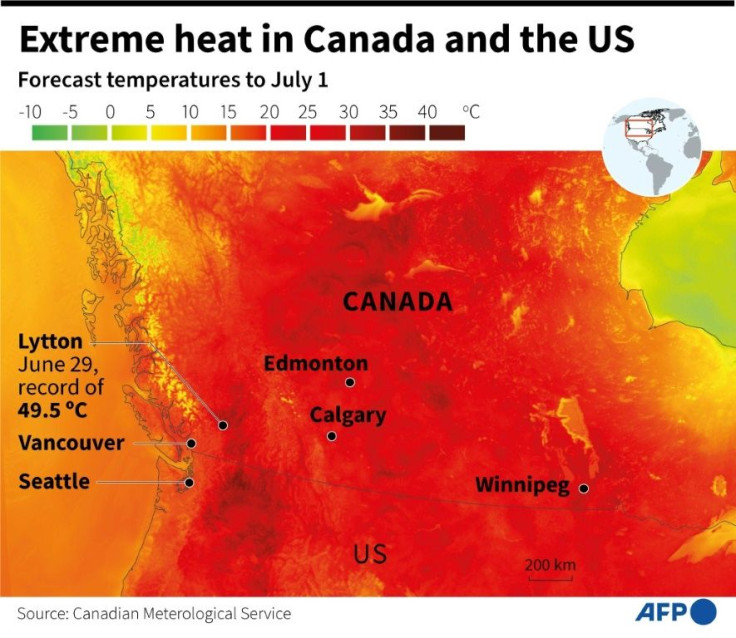Study Predicts Where The Future Heat Waves In America Will Be
KEY POINTS
- Heat waves are the number one cause of death from natural disasters in the U.S.
- In the near future, the number of top 1% of summer days associated with extreme heat will become more frequent
- Pacific Northwest or Upper Midwest would experience 20 times more extreme heat stress days in 2075
The recent spate of heat waves across the world caused a lot of inconvenience for people. A new study has found that temperatures will only increase in the future, which will make heat waves way more common than they are today.
The study, published in the journal Environmental Research Letters, focused on the U.S., and predicted the areas where future heat waves will become more common.
A team of researchers from NASA's jet propulsion laboratory (JPL) and many other universities found that in the near future, the number of top 1% of summer days associated with high heat will become more frequent.
Feeling the Heat in the Extremes: Where To Expect Heat Waves in the United States in the Future https://t.co/0OEsH9C5Hg
— SciTechDaily (@SciTechDaily1) September 18, 2022
"If we assume a high-end emission scenario and we end up with a 3°C to 5°C increase in global temperatures by 2075, what has been the top 1% of summer days for heat stress will be happening for a quarter to half of the summer. That's a huge difference," Colin Raymond, a researcher at JPL, said.
"That one oppressively hot day you remember as summer's worst could well be happening on 30 or even 50 days each summer by 2075," Raymond added.
For their study, researchers used 20 climate projection models, which compared the amount of heat stress people in the U.S. faced on the hottest summer days between 1980 and 2005 with the heat stress people might be subjected to between 2075-2099.
The study adjusted for the concomitant changes in heat, humidity, and exposure to sunlight with time. They calculated something called the Environmental Stress Index to account for the changes.
Including humidity in the parameters is critical, Raymond said. This is so because humid weather reduces the rate of sweat evaporation, which makes people more uncomfortable compared to dry heat. Therefore, increased humidity is more likely to cause heat-related stress and even death.
The study will help in predicting and mitigating some of the effects of these heat waves. Heat waves are the number one cause of death from natural disasters in America. They account for more than 100 deaths in a year.
The results of the study portend a bleak future.
Most pronounced changes in extreme heat stress will be likely visible in the high latitudes, inland, and in mountainous areas — in particular the Upper Midwest, Northeast, and the Pacific Northwest. These areas will see approximately five degrees Celsius increase in the top one percent of days for heat stress. For instance, the Pacific Northwest or Upper Midwest would experience about 20 times more extreme heat stress days compared to the 1980-2005 baseline.
Coastal areas will be comparatively less affected as the sea breeze will dissipate most of the stagnant heat and air. In contrast, high-altitude areas will experience an increase in heat stress due to a shift toward drier air, drier soil, and less cloud cover.
These recent heat waves are not a coincidence.
"We're seeing more heat waves, and they're becoming more intense—and that's because of climate change," Gavin Schmidt, the director of NASA's Goddard Institute for Space Studies, said.
"We have warmed up the planet by about two degrees Fahrenheit in the last century or so. That is juicing the extremes, so the number of times places are exceeding 90- or 100 degrees Fahrenheit (32 or 37 degrees Celsius) is going up—and not just by a little bit. It's gone up four, five, seven times more than before," Schmidt explained.

© Copyright IBTimes 2025. All rights reserved.





















